A: Could dark matter be present in most massive objects, such as the Sun?
An interesting question was asked on StemQ a week ago, addressing the possibility for massive objects like stars (and in particular like the sun) or other heavier systems to contain a substantial amount of dark matter.
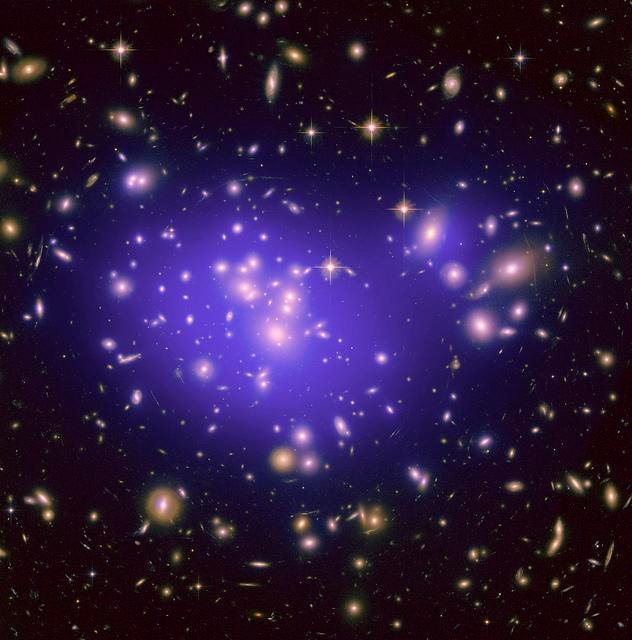 [image credits: NASA/ESA (CC BY 2.0)]
[image credits: NASA/ESA (CC BY 2.0)] To make a long story short: yes, the sun or any system can in principle contain some amount of dark matter.
However, depending on the system, this amount can be or cannot be substantial.
For a star like the sun, it is not large.
However, for a system like a galaxy that is much larger, we can have a lot of dark matter around there. Some galaxies, called ultra diffuse galaxies] are even made almost entirely of dark matter (up to 99%).
Let us however focus on the amount of dark matter that lies close to us (i.e. in the sun and its surroundings) for the sake of the example.
THE ORIGINS OF DARK MATTER
Dark matter lies at the heart of modern particle physics and astrophysics, both theoretically and experimentally.
As the exact nature of dark matter is unknown, theorists have on the one hand access to a huge playground to design models explaining cosmology. For the same reason, experimentalists run on the other hand plenty of experiments trying to detect dark matter directly, indirectly (though cosmic ray production) and at colliders.
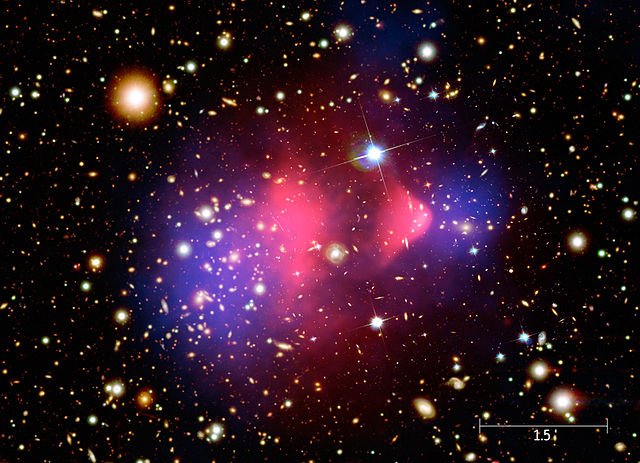
[image credits: NASA (public domain)]
This interest on dark matter is not totally random. Initially, dark matter has been proposed by Zwicky in the 1930s to explain the motion of stars in distant galaxies.
By making use of classical mechanics (the gravitation laws of Newton) and the observed amount of visible matter, the stars were apparently not moving right.
In order to restore agreement between data and theory, the idea of Zwicky was pretty simple: adding some invisible mass where needed.
This invisible mass consists in the substance that is traditionally called dark matter today.
Of course, this is not the only way to restore the agreement between data and theory. The other option would be to modify how gravity works. While not excluded, this option is not as convincing as the dark matter one. However, as long as a model is alive (i.e. not excluded), it is interesting and deserves being studied.
MORE MOTIVATION FOR DARK MATTER - A COUPLE OF EXAMPLES
We are now almost a century later after the first proposal of dark matter and it turns out that dark matter does much more than just explaining the motion of stars in the galaxies.
It explains for instance gravitational lensing that is predicted by general relativity.
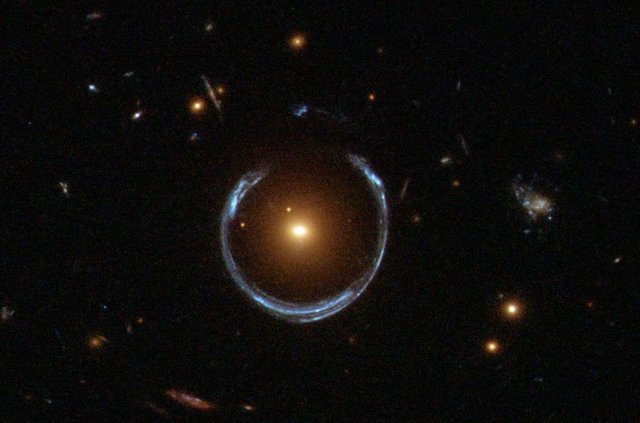 [image credits: NASA/ESA (Public domain)]
[image credits: NASA/ESA (Public domain)] Light travels the universe following the shortest possible path between its origin and its destination.
This path however strongly depends on the amount of (visible or dark) matter present on the way.
Large amounts of matter indeed distort space time, as stated by general relativity.
This spacetime distortion then causes light to follow a bended trajectory.
In other words, a straight line is now bended. On Earth, we can study how light is bended by observing the universe, and hence indirectly come back to the cause of this bending. It turns out that much of the bending is caused by something invisible, i.e. dark matter.
As a second example of the very nice properties of dark matter (there are more but I picked two I really like), we can discuss the cosmic microwave background.
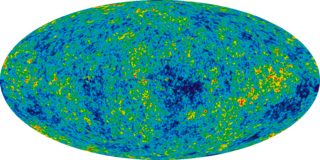
[image credits: WMAP @ NASA (public domain)]
The cosmic microwave background is the fossil radiation left over from the big bang and pervading the entire universe. It is almost a perfect black body radiation, with very small variations.
These variations (called the cosmic microwave background anisotropies) can be measured and one obtains the map in the picture on the right.
From this map and confronting it to theory predictions, one ends up by concluding that dark matter has to be there in a substantial amount.
DARK MATTER AND GALAXY FORMATION
And now the important point to answer the initial question of @irelandscape. Dark matter is a key ingredient to explain the formation of the galaxies.
 [image credits: NASA/ESA (Public domain)]
[image credits: NASA/ESA (Public domain)] At the beginning of its history, the universe was a uniform soup.
At some point perturbations appeared and consisted in the seeds for star formation, and to a larger extend to the formation of galaxies and clusters of galaxies.
This can be simulated and confronted to the present structure of the universe, so that these structure formation simulations provide interesting information on cosmology and how cosmological models could work (and could not work).
In particular, structure formation tells us that dark matter must be there as a major component of these seeds for structure formation. Without dark matter, we would simply not have the galaxy structure that is observed today.
The results of these simulations moreover provide interesting information on how dark matter has to be distributed in the universe.
A SPECIAL CASE: THE LOCAL DARK MATTER DENSITY
Let us now focus on one very specific example: the amount of dark matter in a small volume around the sun. This is what is called the local dark matter density.
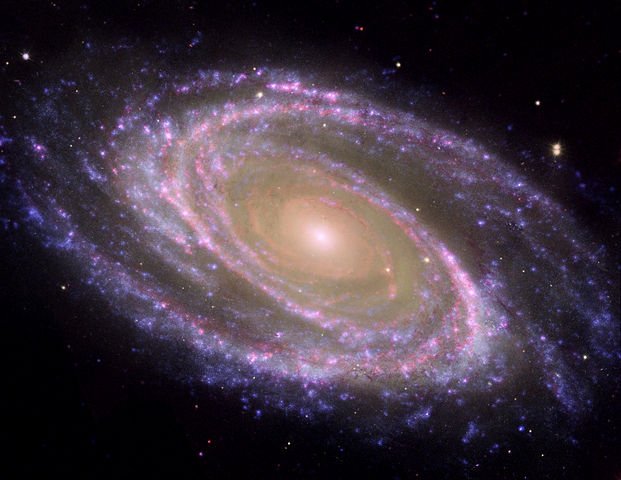
[image credits: NASA/ESa (public domain)]
First, by local, we mean a few hundreds of parsecs around the sun. In kilometers, this consists in something of the order of 1014 kiliometers.
We are indeed in the domain of cosmology and astrophysics: small distances may be incredibly large for the tiny humans we are….
It turns out that the density of dark matter is not zero, and it is even kind of large. In a volume 1027 cubic meters, or the volume of the sun, one should find more or less 1000 tons of dark matter.
Of course, at the astrophysical level, this is a small number. The sun weights in contrast 2 x 1027 tons.
The nice point is that physicists can use this information to constrain dark matter models and get information on what it could be or could not be. There is some dark matter inside the sun that should give rise to observable signals that could be used as constraints on models. But this will be the topic of my next post, this one being already long enough ;)
SUMMARY - TAKE-HOME MESSAGE
In this post, I tried to answer to the question of the amount of dark matter contained in our solar system. I first reviewed briefly how dark matter was invented, i.e. to explain the motion of stars in distant galaxies. I have then discussed a few extra features (among many) of dark matter and how the dark matter hypothesis was reinforced by measurements in the fossil radiation left over from the big bang (the cosmic microwave background), gravitational lensing and the formation of the large-scale structures in our universe.this is
In particular, simulations of galaxy formation indicate that we should have a non-negligible amount of dark matter locally (by local, one means a few millions of millions of kilometers around the sun).
So the answer of question is yes, we have some dark matter inside the sun and in or solar system.
This amount is however far from being substantial. We have roughly 1000 tons of dark matter in the sun, which contributes to 0.0000000000000000000001% of the mass of the sun.
In a next post, I will give details on how physicist can use this information, and this tiny proportion of dark matter inside the sun, to constrain models of dark matter.
STEEMSTEM
SteemSTEM aims to make Steem a better place for Science, Technology, Engineering and Mathematics (STEM). For more information about the SteemSTEM project, feel free to follow @steemstem, have a look to the last news from the project, check out our new app or read our latest distilled.
Please consider to support the project by voting for the SteemSTEM Witness (@stem.witness) or delegating to @steemstem for a ROI of 65% of our curation rewards (quick delegation links: 50SP | 100SP | 500SP | 1000SP | 5000SP | 10000SP).
We are on our way to make Steem a crucial medium for science communication, and it is still time to contribute to this effort!
StemQ Notice: This post was originally submitted on StemQ.io, a Q&A application for STEM subjects powered by the Steem blockchain.
Hi, thanks for the nice article! :-)
I hope I'm not being thick here but if the universe is composed of 85% of dark matter, is it not surprising that only 0.0000000000000000000001% of the mass sun is composed of DM?
How do scientists reconciliate the huge gap between these two numbers?
Over the course of billions of years, shouldn't the sun and some DM in its path have coalesced through gravity?
The point is that the density of dark matter of the universe is not constant. There are regions depleted in dark matter (like around us) and regions with much more dark matter in it (our Milky Way has a halo of dark matter around it).
Yes, there are dark matter particles captured into the sun. That is the topic of the next article ;)
Thanks for the clarification. :-)
You are welcome!
Could dark matter existed before the big bang?
There is no such a thing as "before the big bang" as the big bang is the event at which spacetime (that includes time) started to exist. Therefore, I am afraid that no one can answer your question, at least not with the knowledge we have today.
I guess the summary is yes we have dark matter in the sun. But the quantity is so small, though the physicist could still make a workable model from that size. Right?
It is rather the reverse way: we use the sun to test the existing models of dark matter. But yes, this can be easily be accommodated by many models. I will explain in my next post which types of models can be put into troubles by the sun.
Dark matter study matters :)
Wow! That's a funny one! :D
Amazing article. I loved the simplicity of the article, how you explained it in a very nice way and how you explained gravitational lensing and the important of dark mater to come to the star formations we see today was really awesome and interesting as well ;)
Thanks for passing by of for the very nice and positive comment! Feel free to point me anything I should ameliorate.
Its always a pleasure to read your posts :)
Very kind from you :) I also like what you write. Do you plan to translate in English our latest? I would love it :)
I have done the English one first :) Here is the link https://steemit.com/yu-stem/@rifkan/the-biggest-bang-and-first-three-minutes. I hope you will like it :)
I liked it! It is a great post, very clear and super accessible for non-specialists. What are you working out exactly?
I am a final year student of astrophysics. I have just few exams left to finish it. I am originally from Bangladesh but living in Serbia as I am studying here :) My stipend requires me to study everything in Serbian language so that is the reason I had to learn serbian :)
I see! Thanks for letting me know! Any plan for after the studies? A PhD/postdoc (not too sure if you are a PhD student or a master student :p)?
Dark matter inside the Sun? I didn't think it was possible... Thanks for this article!
There is actually some. As I said, this is even used to constrain realistic dark matter models. But I will give more information on this in my next post (in 2-3 days hopefully) :)
it's awesome.
thanks for sharing useful posts.
i love cosmology and science too.
resteemed.
You are welcome, and thanks for passing by and the resteem :)
Excellent and interesting article @lemouth about dark matter. Thanks for sharing. Regards.
You are welcome my friend! :)
Dark Matter...
Fantastic Ad-hoc Inventions Repeatedly Invoked in Efforts to Defend Untenable Scientific Theories [such as gravity only cosmology]...
FAIRIE DUST
In real life, there is no such thing as "dark matter". We do not live in a gravity-only universe. In real life, gravity is by forty orders of magnitude the weakest force in nature.
Hello gungasnake!
Pleased to meet you - I very much agree with what you say... I post Earth & Space news that shares the work of Ben Davidson and the Suspicious Observers. Their works undermines a lot of accepted science and centres on the previously unacknowledged electro magnetic nature of the universe. This work changes our understanding of gravity and has demonstrated magnetism travelling faster than light - just for starters!
Keep well :D
Check out the Ganymede Hypothesis group on Facebook and also a youtube channel of the same name.
However, data does not exclude dark matter. Therefore, dark matter is not excluded, no matter you (or I) like it or not.
This is correct. And then? How does this contradict dark matter?
Hi @lemouth!
Your post was upvoted by Utopian.io in cooperation with @steemstem - supporting knowledge, innovation and technological advancement on the Steem Blockchain.
Contribute to Open Source with utopian.io
Learn how to contribute on our website and join the new open source economy.
Want to chat? Join the Utopian Community on Discord https://discord.gg/h52nFrV
Hello Le Mouth,
Pleased to meet you! Excellent post - I notice you are a particle physicist so I am very interested in your opinion... Are you familiar with Ben Davidson and the Suspicious Observers? Or the thunderbolts project, another strong proponent of the Electric Universe Theory? Their works undermines a lot of accepted science and centres on the previously unacknowledged electro magnetic nature of the universe. This work changes our understanding of gravity and has demonstrated magnetism travelling faster than light - also these theories better explain star and galaxy formation and much else besides!
Keep well :D
Hi!
I have not followed that from very close, in particular as I work on something else and on different ideas. The reason is very simple. Currently accepted paradigms agree with observations to a very large extent. That is a fact. And this is why they are called standards.
Now, coming with a new idea also agreeing with data does not demonstrate at all that the 'old' theory is wrong. We may have several potential explanations for given phenomena, and new data is often needed to understand which one is less likely or potentially wrong. For all the ideas you mentioned, most their defenders claim current science is wrong and that their idea is 'THE' theory without proving other options are wrong. Usually, such a claim rings bells in my head and I don't pay too much attention.
Moreover, to my knowledge, all these works you mentioned either have been proved incorrect and/or the authors have not answered the main criticisms that have been raised. I have quickly checked on the Internet, and the status does not seem to have changed.
For these reasons, these theories are not recognized in the scientific community. Note that most scientists are more than fine by replacing the current paradigms. The new proposals must however do at least as good as the current accepted theories. This is by far not the case with all the ideas you mentioned.
Thank you lemouth,
I greatly appreciate your respect for new ideas and alternate paradigms. Qualities highly necessary but lacking in many scientists and their institutions so kudos to you! I do understand the work Suspicious Observers and the thunderbolts project certainly has not reached adoption ... but I really hope you will look into this work closer as the electrical nature of many geologic and galactic formations is perfectly replicated by Billy Yelverton for instance. You can find some of his work here: http://www.everythingselectric.com/product/billy-yelverton/ - and more info on the thunderbolts project here: https://www.thunderbolts.info/wp/ I do believe some phenomenal advances have been made in parallel to standard scientific understanding and I think it would greatly enrich you and your community if you research this further to help speedy integration of any new concepts - for the good of all mankind!
A great pleasure to speak with you - keep well :D
Hey,
From what I have quickly found, the electric universe does not describe the star dynamics appropriately, from several aspects. Which is the first of many flaws. This was already the case decades ago, and this has still not been fixed.
Honestly, why would I spread a theory that does not work? If someone can show me that the electric universe theory works at least as good as the standard model of particle physics and cosmology, then I would do it. But we are far from being there.